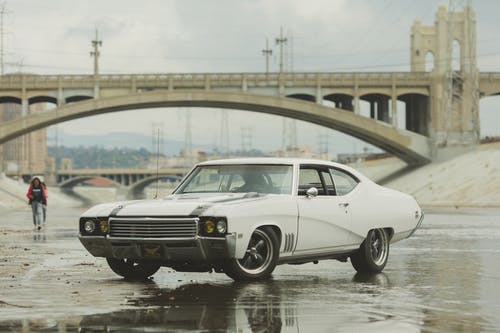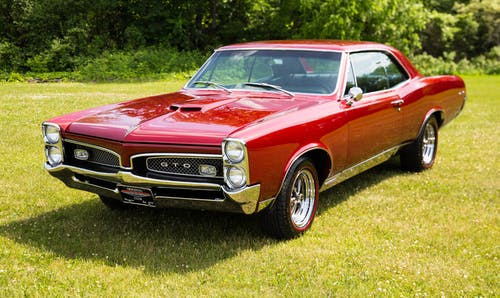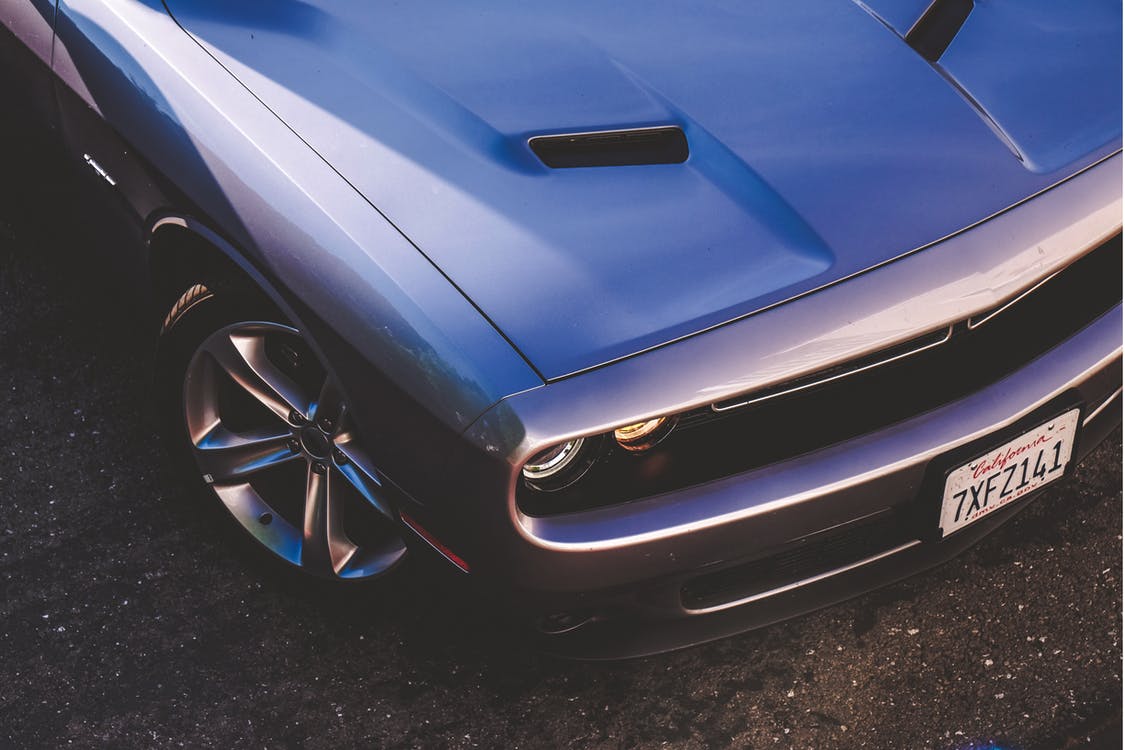America loves speed and when you hear muscle cars, you think of large vehicles. However, they are not as huge as they sound to be. Muscular car is a term that describes the vehicle as a high-performance vehicle. They are rear-wheel-drive vehicles with torque-rich V8 engines. From the 1960s to the 1970s, muscle cars were designed for drag racing. The golden era of muscle cars was from the 1960s to the 1980s but now they have become a collectible.
The main reason that you don’t see old school muscle cars much on the road is because of emission regulations. The safety and emission regulation have limited the designs of muscle cars. Muscle cars have been an automotive culture of America. There are amazing facts behind the engine and horsepower of the muscle cars and much more. And if you want to know which online casino site offers players the best perks and services, take time to read these verified online casino reviews.
Facts About American Muscle Cars
The First American Muscle Car
No one knows about the first American muscle car. It is argued by many auto professionals that the 1964 Pontiac GTO was the first American muscle car manufactured in history. But some believe that the 1949 Oldsmobile Rocket 88 was the first muscle car that got the attention of muscle car enthusiasts. It had a V8 engine, a scaled-black body, and a foot shorter than the 98-series.
The Oldsmobile Rocket 88 had an engine displacement of a 303-cubic inches. It had an output of 135 horsepower and a two-barrel carburetor. The high-end muscle and torque gave Oldsmobile Rocket 88 a low-end speed of 97 mph.
Australia Manufactured Muscle Cars
Muscle cars were not only manufactured and produced in America but also in Australia. The muscle cars were having a huge following in Australia by muscle car enthusiasts. The Australian muscle cars gained popularity at the same time when they were at their peak in America. The significant muscle car manufacturers in Australia were Ford Australia, Chrysler Australia, and Holden.
In the 1970s, the Australian government banned the production of muscle cars not because of emissions but based on safety. The Australian muscle cars crossed the speed limit of American muscle cars. The prototypes of Australian muscle cars could easily reach 170 mph. It was unsafe for a muscle car.
Ford Mustang Is Not a Muscle Car
It is argued that Ford Mustang is not a muscle car. The American muscle car enthusiasts classify it as a pony car. It is a classification of compact, affordable, and highly styled convertibles or coupe. Pony cars are having a small body and big engine as compared to the American muscle car. Even though they are having V8 engines, but they are small in power.
1964 Ford Mustang was the reason for the popularity of pony cars. It was a performance-oriented and highly styled car in the category of muscle cars. Currently, Dodge Challenger, Ford Mustang and Chevrolet Camaro are the pioneer manufacturers of pony cars.
Same Engines, Different Horsepower
During the significant era of muscle cars’ popularity, the production companies used to hide the horsepower ratings. It was done for false advertising of the power of muscle cars. Also, it was done for the insurance policies. General Motors was having a rule of not producing the muscle car with greater than one horsepower for every 10 pounds of the vehicle’s weight. This rule was applied to the other manufacturers to prohibit them from making overpowered muscle cars.
For example, in the late 1960s, Pontiac launched a new model having a 400 V8 engine. It was having 320 hp. On the other hand, the 1964 Pontiac GTO was having a 400 V8 engine but the horsepower of this model was 366 hp.
Police Muscle Cars
In the current period, law enforcement agencies have been using different kinds of vehicles for patrolling. When the muscle cars were manufactured and launched for car enthusiasts, the police cars were big and slow. As a result, the law enforcement agencies were not capable of pursuit while patrolling. Alabama State Troopers needed fast cars to chase the suspects.
The police muscle cars were designed in a way that they had enough space for officers with basic and regular equipment of police. Hence, AMC Javelin, a V8 muscle car was chosen for the police department. AMC Javelin was the perfect fit because of its performance and affordability. Alabama was the first state that used muscle cars because of the high-speed pursuits of 150 mph during highway patrolling.
Engine Switch-Ups
The classic American muscle car of the ’60s and ’70s with powerful V8 engines were later converted into smaller engines such as V6. The 1987 Buick GNX came as close as possible to the glory days with a turbocharged V6 engine. To your surprise, in the 20th century of Pontiac Trans Am, the 1989 model was having the same engines under the hood.
The other kind of engine switch-up was nothing as compared to the 1969 Chevrolet Camaros ordered from the head office. In this era, some of the car dealers figured out the ways to order Camaros with rare ZL-1 427 V8 engines. These engines were used for the police muscle cars. The rare supercharged Camaros did not go unnoticed for long.
In the current period, a limited number of these special cars are available today. Their auction price goes to $400,000. If you buy a 1969 COPO 9560, you will not get to know that what is running under the hood because the engine would not be having any emblems.
1970 Chevy Chevelle LS6 With A Mighty Engine
Chevrolet Corvette has been the top-performing muscle car of Chevy. It is known as the ultimate muscle car. GM was not accepting any Chevy muscle car to have higher horsepower higher than Corvette. In 1970, the imposing rule was relaxed and the highest Corvette 390 hp muscle car was replaced by 1970 Chevy Chevelle LS6 with 450 hp. It was the highest performing muscle car at that time.
The 7.8L V8 engine of 454 cubic inches was having 500 pound-feet torque and 450 horsepower. The M22 four-speed manual transmission engine powered the rear wheels. Also, it was having factory options such as the heavy-duty battery, power steering, power front disc brakes, and performance suspensions.
In this article by RoadCartel.com titled Best Chevelle Suspension upgrades, they cover all the best chevelle suspension kits available for all year Chevrolet Chevelle cars.
Road As a Test-Lab
The muscle cars were built with racing engines. It makes it clear that the 1970s was the golden age for Nascar. Not everyone knows how closely the related muscle cars were to the popular racing events. When the manufacturers had to make a car design for Nascar races, they first had to sell 500 cars for approval. In this period, the prototypes were of real racing vehicles.
One of the prototypes for the racing event is the 1969 Ford Mustang Boss 429. This muscle car was launched with three different engine variants such as the S code for racing, the T code for lightweight muscle cars, and the A code for a muscle car featuring a valve train and anti-smog gear.
The Credibility of Muscle Cars
The 1968 Plymouth Road Runner was a revolutionary model. It made a huge difference to the muscle car market. Some of the muscle cars were not on their roots such as fast cars at cheap prices. As they developed more features and increased horsepower, the prices of muscle cars also increased.
Hence, Plymouth developed Road Runner, as a basic trim model with a lower price than the market. It was a mid-size performance car with a 6.3L v8 engine, 4-barrel carburetor with 335 hp.
Acid Dipping
To make high-performance muscle cars in the late ’60s, the body of the car was dipped in acid. It was a popular method to make a lightweight body by submerging it in an aggressive acid tank. It removed the body fillers, paint, and some amount of metal. Hence, the body of the car was made significantly lighter. This process was used by race car builders but later on, it was used by the manufacturers of muscle cars.
American Muscle Cars – Amazing Facts
American muscle cars were high-performance vehicles in the ’50s and ’60s. Yet no one knows about the first American muscle car. They have been a popular choice of young or old drivers. The bold design, wide wheels, V8 engine with a lot of horsepower depicted the bold image of the drivers. Any car enthusiast can easily name their favorite muscle car of their era.
The muscle cars of that era are not similar to the modern muscle cars. They have more horsepower rating with massive acceleration in a drag race than the old ones. Despite this fact, some people still prefer the old-school American muscle cars.




